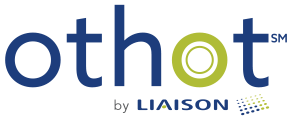Your Analytics Roadmap: Services, Tools, or Solutions?

John Abbatico
As predictive analytics is evolving and becoming more main stream, organizations need to determine their strategy and approach to adoption. As I see it, there are three approaches that organizations can take to start their journey with predictive analytics: tools, services and/or solutions. The approach strategy can vary based on the organization size and objectives and in many cases can involve all options. Let’s look at each and some pros and cons.
Organizations can start to incorporate predictive analytics by taking a services approach. Service engagements involve bringing in outside experts to help build a roadmap and execution plan to the objective. This typically starts with an evaluation of the organization's readiness to tackle predictive analytics. Othot partner IIA (International Institute for Analytics) provides this type of service to organizations. The result of this engagement provides the organization with the knowledge and an execution plan on how to transform and leverage predictive analytics. Services solutions can also help in technology selection and implementation and in some cases the services providers can build and deploy solutions. Engaging services is typically a longer journey to results, but for larger organizations that have many systems collecting data across the enterprise, this approach is a must. Smaller organizations don’t typically have the time, infrastructure or budget to take this approach.
Tools enable organizations to build and deploy solutions. They come in a wide variety of flavors from data collection and storage solutions to predictive modeling and visualization solutions. As predictive analytics hits the main stream more and more tools are coming to market every day. Deployment of tools takes resources and expertise and in some cases can require technology infrastructure (unless they are cloud-based). These resources almost always include data scientists that have the knowledge to take business problems to models and then models to results. Tools typically are solution agnostic, meaning they can solve a variety of business problems when correctly implemented. The tool approach is also an approach that larger organizations are considering, typically after they have services guide them on their roadmap. Time to value for tools can be long and costly. Without a clear plan and understanding of problems that have the highest impact to solve, return on investment in tools can be elusive.
Solutions provide focused, all-inclusive results to organizations. Solutions incorporate the services, know-how and technology to execute on predictive analytics. Typically, organizations can implement solutions at a lower total cost. Solutions encapsulate technology and the good ones also encapsulate the need for data science expertise. The one constraint of solutions is that they are focused on solving specific problems. This may seem like a negative but in many cases a focus on high impact results is where all organizations big and small need to start in their journey to leverage predictive analytics. If you're small, these results help achieve growth and competitive advantage. If you're larger, these results provide faster return on investment that can fund organizational transformation.
Depending on size, services and tools may play a role in an organization's evolution to predictive analytics. However, big or small, all should look for solutions to help start the revolution to predictive analytics.

John Abbatico



